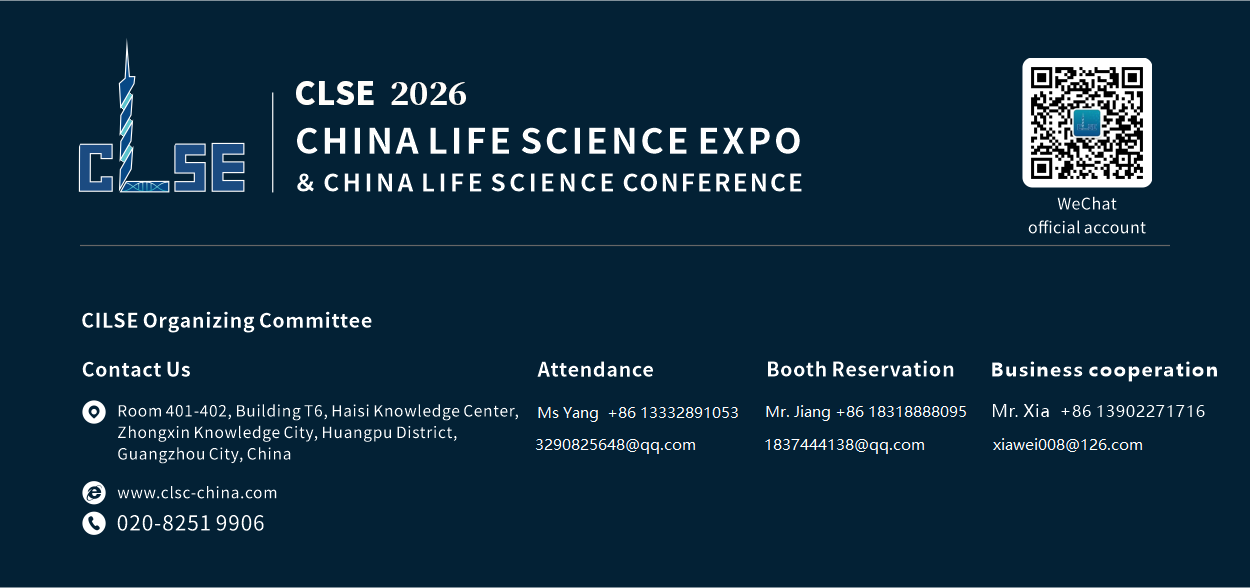
The Chinese Association for Science and Technology Life Science Association (CASS) consortium conducts the annual "Top Ten Advances in Chinese Life Science" selection based on the principles of fairness, impartiality, and openness. This year, we will continue to classify and recommend project achievements for knowledge and technology innovation, and organize member societies to recommend them. The results will be selected by senior experts in the fields of basic life sciences, biotechnology, and clinical medicine, and reviewed by the Presidium of the Chinese Association for Science and Technology's Life Science Association. Finally, 7 knowledge innovation and 3 technology innovation project achievements will be identified as the "Top 10 Advances in China's Life Sciences" for 2022.
The selection method for the "Top Ten Advances in Chinese Life Sciences" is gradually improving, and the number of experts in the evaluation committee continues to increase. This year's evaluation experts include academicians from the Chinese Academy of Sciences and the Chinese Academy of Sciences recommended by various member societies of the consortium, representatives of outstanding frontline scientists in this field, and project leaders selected for the "Top Ten Advances in Chinese Life Sciences" in previous years, and an avoidance system has been implemented, further reflecting the professionalism, authority, and impartiality of the selection. The selected projects this year have outstanding originality and significant social significance. Among them, the study on the immune escape mechanism of COVID-19 mutants has provided new knowledge for the prevention and control of the global COVID-19 epidemic; The research on precise treatment plans for ischemic cerebrovascular disease has pioneered the field of precise treatment in the international cerebrovascular disease field; The study of the molecular mechanisms underlying the initiation of multicellular autophagy is of great significance for exploring the occurrence and development of neurodegenerative diseases. The selected research projects are all aimed at people's lives and health, focusing on solving hot issues.
Since 2015, the Chinese Association for Science and Technology Life Science Association has been conducting an annual selection of the "Top Ten Advances in Chinese Life Science", aiming to promote research and technological innovation in life science, fully showcase and promote major scientific and technological achievements in the field of life science in China. At present, the selection activity has been carried out for 8 consecutive years. After the annual announcement of the selection results, selected project experts are invited to write and publish science popularization books, and exchange meetings and science popularization reports for young people are held to reveal the new mysteries of life science to the public, providing new ideas for the development of new technologies in life science, medical breakthroughs, and the development of bioeconomy, greatly improving the social influence of life science and related technologies.
The Life Science Society of the Chinese Association for Science and Technology jointly announced to the public the results of the "Top 10 Advances in Chinese Life Science" selection for 2022 (in no particular order).
Chinese Association for Science and Technology Life Science Association Federation
January 18, 2023
The COVID-19, Omikron strain, is constantly mutating and has caused multiple rounds of outbreaks in the world. Analyzing the humoral immune escape mechanism of COVID-19 mutant is of great significance for the research and development of COVID-19 vaccine and the prevention and control of epidemic situation.
Xie Xiaoliang and Cao Yunlong from Peking University, together with Wang Xiangxi from the Institute of Biophysics of the Chinese Academy of Sciences and Wang Youchun from the Chinese Academy of Food and Drug Control, took the lead in reporting the humoral immune escape characteristics and molecular mechanism of COVID-19 Omikron and its subtype variants. The structural and infectious characteristics of several mutants were analyzed for the first time, and the full epitope distribution and escape map of the neutralizing antibody of COVID-19 were characterized in detail. It was revealed that the mutation carried by Omicron BA. 1 could specifically escape from the original strain infection and the neutralizing antibody induced by vaccination, while the mutation carried by Omicron BA. 4/BA. 5 could specifically escape from the neutralizing antibody induced by BA. 1 infection, which proved that it was impossible to block the transmission of COVID-19 through population immunity through Omicron infection. This series of studies has enhanced the scientific understanding of the prevention and control of the world's COVID-19 epidemic, and provided important data reference and theoretical support for the research and development direction of broad-spectrum COVID-19 vaccines and antibody drugs.
The five research papers on this achievement have been published in journals such as Nature, Cells, and Cells: Hosts and Microorganisms (Nature, 608:593-602; Nature, 602:657-663; Nature, 603:919-925; Cell, 185 (5): 860-871); Cell Host&Microbe, 30 (11): 1527-1539. e5).

Structural characteristics and immune escape mechanism of Omicron BA. 1 spike protein
There are 330 million cardiovascular disease patients in China, and excessive cholesterol in the blood is the main risk factor. Although existing lipid-lowering drugs can reduce blood lipids to varying degrees, they have certain side effects and limitations. The molecular structure of cholesterol determines that it is difficult to degrade in living organisms, so the discovery of methods to excrete cholesterol into the body is of great significance for the development of new lipid-lowering drugs.
The team led by Song Baoliang from Taikang Life Medicine Center of Wuhan University found that after the loss of glycoprotein receptor ASGR1, cholesterol is excreted into the bile and further left the body through feces. Inhibiting the function of ASGR1 can promote a large amount of cholesterol efflux, reduce blood lipid and liver fat, and have a good effect on atherosclerosis. Meanwhile, the neutralizing antibody of ASGR1 can be combined with existing lipid-lowering drugs to achieve better lipid-lowering effects. This discovery points the way for the development of new lipid-lowering drugs that promote cholesterol efflux, and ASGR1 has become a hot target for multiple pharmaceutical companies to develop lipid-lowering drugs.
The research paper on this achievement was published in the journal Nature (Nature, 2022, 608 (7922): 413-420).
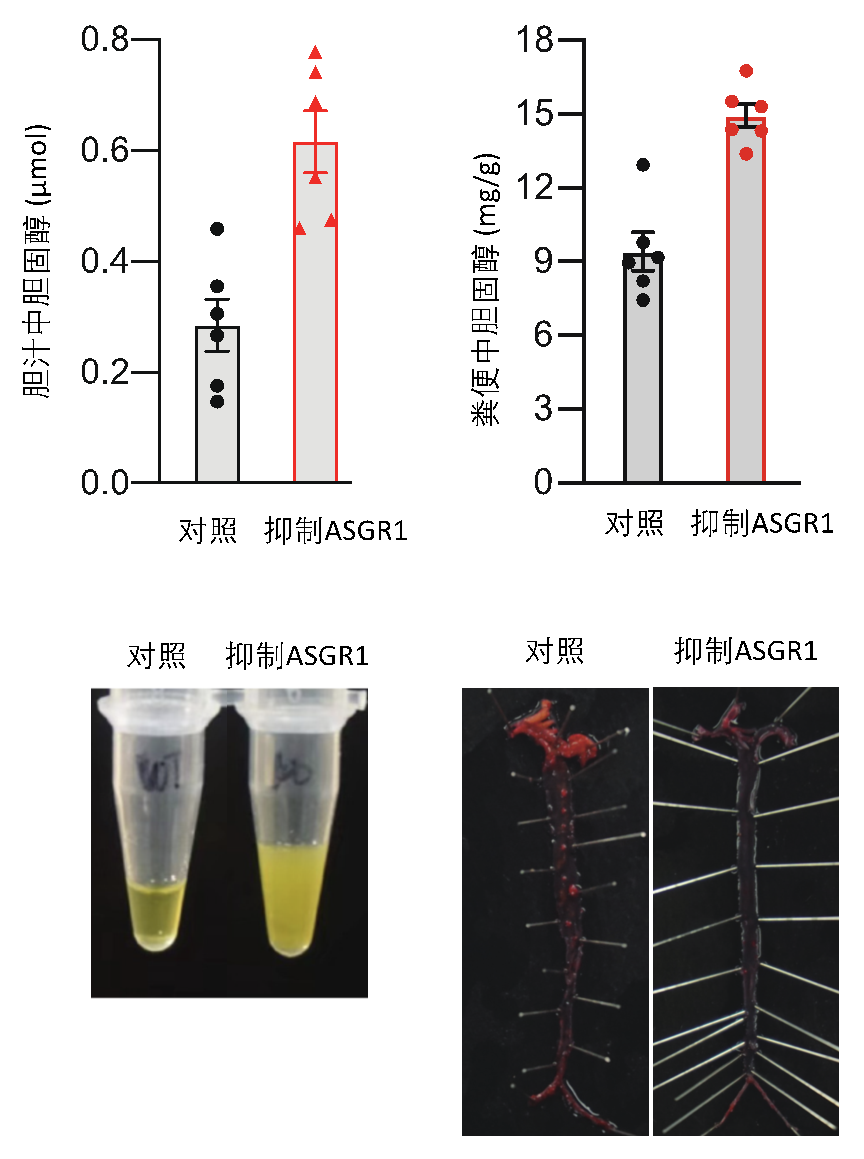
Figure: Inhibition of ASGR1 promotes cholesterol excretion into bile and feces and can prevent atherosclerotic plaque formation
在漫长的生命进化过程中,染色体会发生重排而导致核型变异。每百万年啮齿类动物就会积累3.2-3.5种染色体重排,而灵长类动物也会积累1.6种染色体重排。这类事件如何在实验室模式动物中进行模拟和研究?
中国科学院动物研究所李伟、周琪团队与中科院分子细胞科学创新中心李劲松团队等首次实现了哺乳动物完整染色体的可编程连接,创建出一系列具有19对染色体的全新核型的实验小鼠,在实验室以人工设计的方式实现了自然界中经过数百至数万年才能实现的核型演化事件。该研究发现了染色体长度的限制;揭示了染色体重排对生殖的影响;证实基因组组装的稳健性是染色体演化的重要基础,为哺乳动物染色体结构改造、动物新核型亚种的创造以及染色体结构变异疾病的模拟提供了可行的技术路线,开启了哺乳动物染色体遗传改造的新领域。
该成果发表于《科学》和《细胞研究》杂志(Science,377(6609):967-975;Cell Research,32.11 (2022): 1026-1029)。

染色体连接小鼠“小竹”,拥有独特的染色体组型
在人类卵子受精后,早期胚胎起初基本处于转录沉默状态,翻译调控对于卵子成熟、受精及胚胎基因组激活都起到了重要作用。合子基因组激活作为生命的第一次基因表达,是胚胎发育启动的标志性事件。然而人类合子基因组是如何激活的长久以来一直是一个未解之谜。
清华大学颉伟教授、山东大学陈子江院士与赵涵教授课题组,通过开发超灵敏翻译组与转录组联合测序技术,首次绘制了人类早期胚胎发育的翻译图谱。该工作通过寻找基因组激活时期高翻译的转录因子,鉴定出了TPRX1/2/L家族蛋白,证明其对人类合子基因组激活和早期胚胎发育起到了重要调控作用。该工作解决了人类胚胎程序第一次是如何启动的重大基础科学问题,并且为未来治疗不孕不育、改善辅助生殖技术提供了重要的理论基础和研究工具。
该研究成果发表于《科学》杂志 (Science 378,eabo7923)。
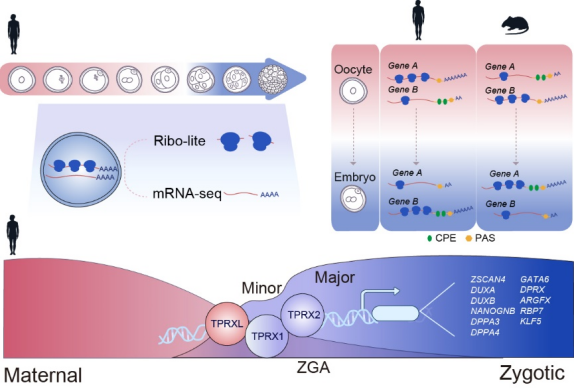
人类卵子和早期胚胎翻译组与转录组联合测序
揭示翻译调控机制和合子基因组激活关键因子
细胞是生命的基本功能单元。细胞类型、定位和细胞间通讯的分析对于理解器官功能、个体发育、人类疾病和物种器官演化至关重要。
华大生命科学研究院汪建、徐讯领导的团队基于自主DNA纳米球测序技术,研发了高精度大视场空间转录组技术,将认识生命的分辨率推进到了500nm的亚细胞级,相比过去同类技术,分辨率提升了200倍,视野大小提升了483倍。基于该技术华大联合中科院、南方科技大学、华中农业大学及广东省人民医院等团队在国际上首次绘制了小鼠、果蝇、斑马鱼、拟南芥和蝾螈等重要模式生物迄今为止最高精度最全面的时空基因表达数据集,并发现了过程中起关键调控作用的全新细胞类型。该系列成果发表后在国际上引起热烈反响,推动成立了中国科学家主导的时空组学全球联盟STOC,吸引了来自25个国家190余科研团队参与。
本项目相关成果共计5篇论文以专题和封面文章的形式分别在Cell,Science及Developmental Cell发表。时空组学全球联盟STOC在Cell官网同步发布。
(https://www.cell.com/consortium/spatiotemporal-omics)
二甲双胍不仅是治疗二型糖尿病的一线药物,临床研究还发现,二甲双胍具有抗肿瘤、延缓衰老等神奇功效。但是二甲双胍上市65年来,其作用靶点始终是一个谜。
厦门大学林圣彩团队历经7年的科研攻关,发现了一种称为PEN2的蛋白质是二甲双胍的靶蛋白。重要的是,该研究不仅发现了二甲双胍的直接作用靶点,而且还从分子角度勾画出了二甲双胍行使功能的路线图。他们还筛选到一个能模拟辟谷效应(卡路里限制)的化学药物(俗称“辟谷精”),具有降糖、治疗脂肪肝、延长寿命的效果;还发现了 “辟谷精”和二甲双胍均借道先前他们发现的葡萄糖(卡路里限制)感知通路,从而偶联到AMPK长寿相关通路,达到治疗糖尿病和脂肪肝等重大代谢性疾病以及延缓衰老等作用。二甲双胍作用机制研究专家Kei Sakamoto和糖尿病研究专家Niels Jessen撰文指出,该发现对研发克服二甲双胍缺陷的新型替代药物有重要价值;AMPK领域专家David Carling撰文称“辟谷精”为找寻已久的攻克代谢性疾病的魔法弹药。
该成果两篇研究论文发表于《自然》杂志(Nature, 2022, 603: 159-165)和《自然-代谢》杂志(Nature Metabolism, 2022, 4: 1369-1401)。
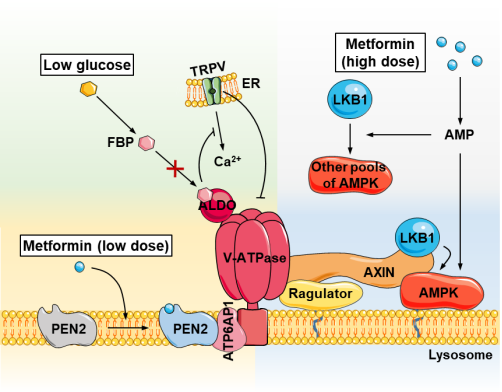
二甲双胍作用于葡萄糖感知通路模式图
高复发是缺血性脑血管病防治的世界难题,但各国指南推荐的阿司匹林单一抗血小板治疗效果有限,而叠加其他药物的联合抗血小板治疗的临床研究均因无效或增加严重出血风险而失败,因此联合治疗曾被国际指南禁用于缺血性脑血管病。
首都医科大学附属北京天坛医院王拥军团队在国际上首次提出的阿司匹林叠加氯吡格雷的短程双通道双效应联合治疗方案改写了欧美等多国指南。基于此方案他发现氯吡格雷吸收与代谢通路的关键基因ABCB1、CYP2C19和F2R均显著影响药物疗效,并针对携带氯吡格雷功能缺失等位基因的人群提出了“绕行基因”的替格瑞洛替代治疗方案,该方案可使复发风险相对降低23%,被NEJM评价为开启了脑血管病基因指导治疗的新时代,被Nature Medicine和European Heart Journal评价为基因分型指导脑血管病治疗的新契机。
以上研究成果发表于《新英格兰医学杂志》(N Engl J Med 2021,385(27): 2520-2530)。

携带CYP2C19功能缺失等位基因者应用替格瑞洛替代治疗方案的有效性
人类基因组早被测序,但其功能至今鲜为人知,这严重妨碍了疾病诊治。上海科技大学池天团队,独辟蹊径,八年一剑,将“CRISPR基因编辑”和“Cre基因重组”两大底层工具融合成颠覆性的“高通量、泛组织”基因功能解码技术iMAP,能将小鼠基因的解码速度提高至少100倍。本工作还利用iMAP,成功描绘了世界首张“扰动图谱”,它展示了小鼠90个蛋白编码基因分别在39种组织细胞的基本功能,也必将催生覆盖全部基因和组织、解码整部“生命天书”的“全景扰动图”,后者将成为未来人们探索生命奥秘时必不可少的“世界地图”。iMAP性能稳健、操作简单、易于普及、用途广泛(包括挖掘疾病药靶和优化水稻品种),实现了基因解码领域从0到1的技术突破。
该成果发表于《细胞》杂志【Cell,2022,185(16):3008-3024.e16】
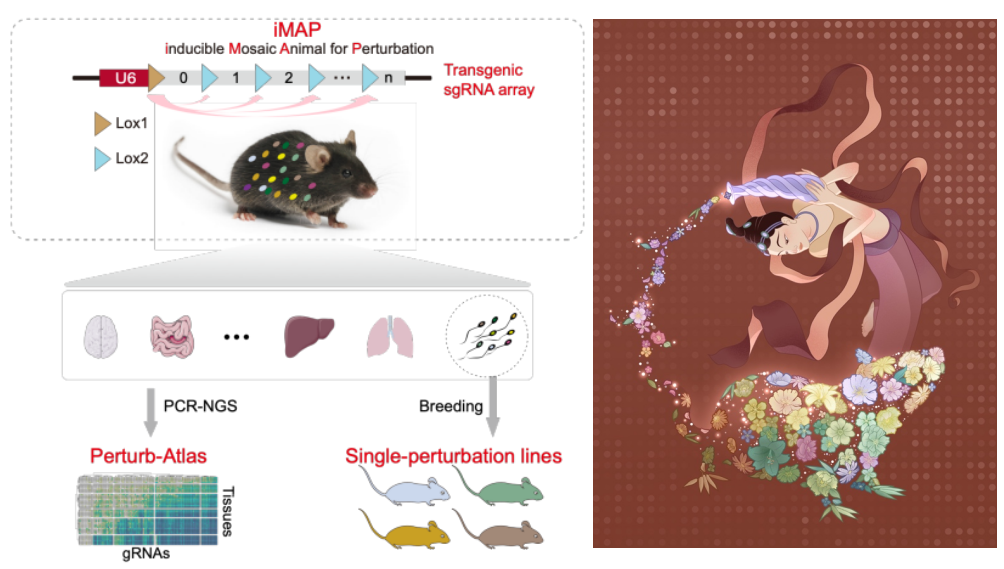
图注:iMAP工作原理及其用途。右图(“飞天撒花”)是iMAP工作原理的“敦煌版”, 展示飞天(Cre)从花瓶(转基因)中释放出花朵(gRNA),后者产生嵌合鼠(设计:李自豪,池天)。
自噬在细胞中起到“清道夫”的功能,通过把细胞内错误折叠的蛋白质、损伤的细胞器等“垃圾”包裹在一个称作自噬体的双层膜结构,并运送到溶酶体进行降解及回收。自噬对抵抗多种应激和维持细胞稳态至关重要。寻找决定自噬体形成的信号是自噬领域一个长期悬而未决的难题。
中国科学院生物物理研究所张宏团队发现,自噬诱导时,内质网表面发生钙瞬变,并触发FIP200自噬起始复合物发生液-液相分离,形成的FIP200凝聚体与内质网膜蛋白结合并定位于内质网,成为自噬体起始位点。该工作揭示了内质网表面钙瞬变是启动自噬体形成的关键信号,极大地促进了人们对自噬分子机制的理解,并对探究内质网钙失调导致的神经退行性疾病等相关疾病中自噬异常的机理有重要意义。
该研究成果发表于《细胞》杂志(Cell, 2022, 185(22): 4082-4098)。

内质网表面钙瞬变是决定自噬体形成的关键信号
随着全球气候变暖,极端高温天气频发,使作物大量减产,加剧粮食安全问题。挖掘作物抗高温基因资源、阐明高温抗性调控机制,以培育抗高温作物品种是当前亟待解决的挑战课题。
中科院分子植物科学卓越创新中心林鸿宣团队与上海交通大学林尤舜团队合作揭示水稻高温抗性的新机制,挖掘出由TT3.1和TT3.2组成的抗高温遗传模块TT3,同时首次发现第一个潜在的高温感受器(TT3.1),其感知并传递高温信号给叶绿体蛋白TT3.2,保护叶绿体免受热伤害;来自非洲稻的TT3.1-TT3.2模块显著增强高温抗性,在高温胁迫下比对照增产1倍。林鸿宣团队又挖掘出水稻抗高温基因TT2,首次揭示钙信号-蜡质代谢的抗高温新机制,在高温胁迫下TT2比对照增产54.7%。TT2和TT3成果为作物抗高温育种提供珍贵基因资源。
以上研究成果分别发表于《科学》杂志(Science 376: 1293-1300)和《自然植物》杂志(Nature Plants 8: 53–67)。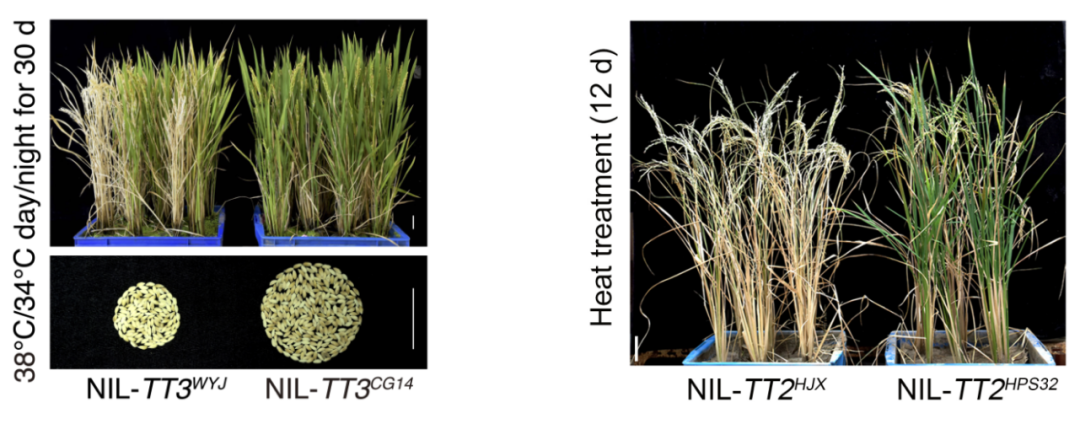
图1. 分别来自非洲稻的TT3CG14基因位点(TT3.1-TT3.2模块)(左图)和来自热带粳稻的TT2HP32基因位点(右图)比对照显著增加水稻的高温抗性。
来源:中国科协生命科学学会联合体
